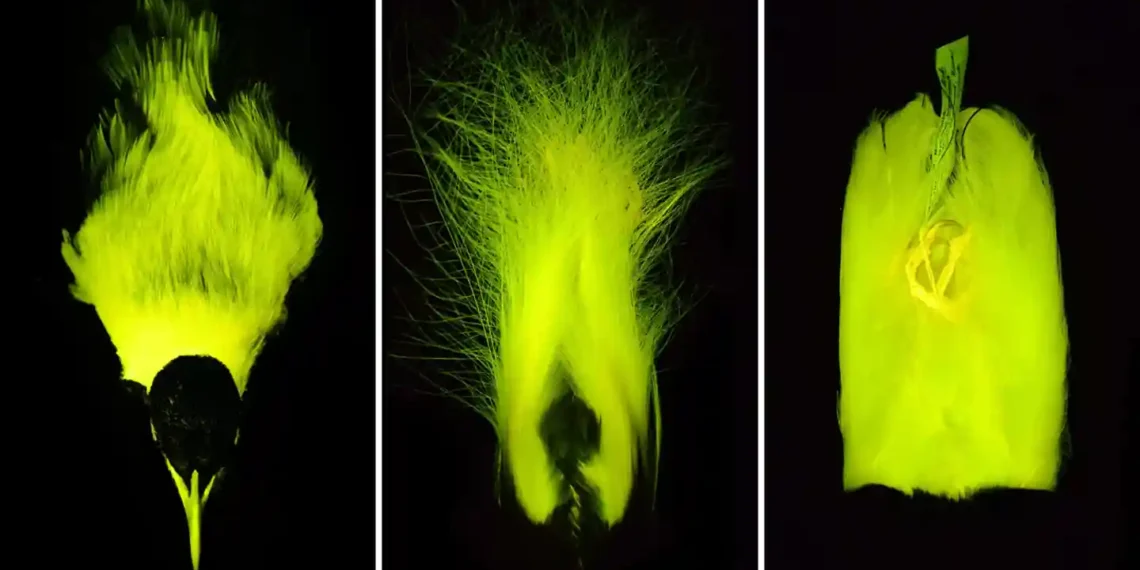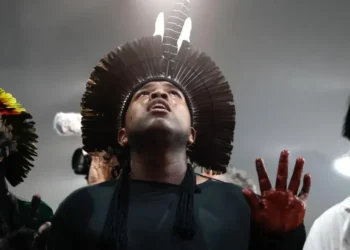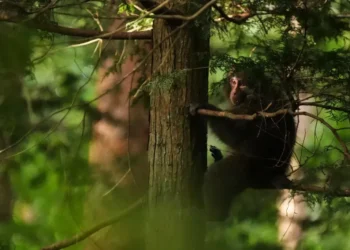Birds-of-Paradise Use Secret Color Signals Invisible to Humans
Birds-of-paradise are known for their dazzling colors, but new research reveals they have an even more extraordinary trait—hidden color signals invisible to the human eye. Scientists have discovered that these birds emit biofluorescent hues under ultraviolet (UV) and blue light, adding a new layer to their already spectacular displays.
A Hidden Glow in Nature
While many birds, like parrots and peacocks, are famous for their vibrant colors, birds-of-paradise take it to the next level. A study published in Royal Society Open Science on February 12 found that these birds’ plumage and body parts glow in bright green and yellow-green under UV and blue light.
This effect, known as biofluorescence, occurs when certain materials absorb high-energy light, such as UV or violet, and then emit it at a lower energy wavelength. Unlike bioluminescence—where organisms produce their own light through a chemical reaction—biofluorescence depends on external light sources.
Scientists observed biofluorescence in 37 out of 45 known species of birds-of-paradise, which are native to Papua New Guinea, eastern Indonesia, and parts of Australia. These fluorescent signals might play a crucial role in attracting mates or settling territorial disputes, researchers suggest.
Bird Vision: Seeing Beyond Human Limits
Birds have exceptional color vision, and many species—like pigeons, ducks, and geese—can see UV light. While little is known about birds-of-paradise specifically, their close relatives (such as crows, magpies, and fantails) have vision sensitive to violet wavelengths.
For these birds, the fluorescent markings would shine like beacons, making them highly visible to potential mates or rivals. Dr. Jennifer Lamb, an expert in biofluorescence at St. Cloud State University, explains why this discovery is so significant:
“Biofluorescence is a visual signal, yet it has been relatively understudied because it’s something human eyes simply can’t perceive.”
A Surprising Discovery in a Museum
The breakthrough came when Dr. John Sparks, a curator at the American Museum of Natural History (AMNH), decided to explore whether birds-of-paradise had biofluorescence. Sparks, who had previously discovered biofluorescence in fish, suspected the trait might exist in birds as well.
His hunch was confirmed when he shone blue light on bird specimens from AMNH’s collection—revealing fluorescent traces. However, it wasn’t until Dr. Rene Martin, a postdoctoral researcher, joined the team in 2023 that the study expanded.
Armed with high-powered blue and UV flashlights, Martin and her colleagues meticulously examined the museum’s bird specimens. Wearing special goggles to filter out the blue light, they found fluorescent patterns across various body parts, including bellies, chests, heads, necks, and even inside the birds’ mouths.
“Oftentimes, the fluorescent areas were bordered by ultra-black feathers, which absorb light and create a dramatic contrast,” Martin said. “Interestingly, birds-of-paradise that didn’t exhibit fluorescence also lacked these ultra-black feathers.”
Why Do Birds-of-Paradise Glow?
Biofluorescence has been documented in only a few bird groups, including auks, bustards, owls, nightjars, parrots, penguins, and puffins. But researchers still don’t fully understand why birds use this trait.
For parrots and birds-of-paradise, the leading theory is that it enhances communication and courtship displays. However, in other birds, scientists aren’t sure if biofluorescence serves a purpose or is simply a byproduct of feather structure.
Martin explains:
“It could be something that evolved as a useful protein for feather structure that just happens to biofluoresce.”
The Bigger Picture: Biofluorescence Across the Animal Kingdom
Biofluorescence isn’t unique to birds. Scientists have found it in fish, salamanders, sea turtles, marsupials, and even mammals. The discovery of biofluorescence in birds-of-paradise suggests this trait may be more widespread than previously thought.
Dr. Lamb believes studying biofluorescence is crucial for understanding how species communicate and evolve:
“This research helps us see how different animals develop unique survival strategies.”
Beyond nature, biofluorescence has practical applications. Green fluorescent protein, first discovered in jellyfish, is now widely used in medical research to track cell development, study cancers, and monitor disease progression.
“If biofluorescence appears all over the tree of life, it likely has important biological functions,” Martin said. “For birds-of-paradise, it could be signaling. For other species, it might aid in camouflage. Either way, it’s another incredible tool that evolution has provided.”
A New Perspective on Nature’s Hidden Beauty
The discovery of biofluorescence in birds-of-paradise opens new avenues for understanding avian communication. While humans can’t see these secret signals, birds likely perceive them as vividly as we see neon signs at night.
As scientists continue to explore this phenomenon, one thing is clear: nature still has countless surprises waiting to be uncovered.
This article was rewritten by JournosNews.com based on verified reporting from trusted sources. The content has been independently reviewed, fact-checked, and edited for accuracy, neutrality, tone, and global readability in accordance with Google News and AdSense standards.
All opinions, quotes, or statements from contributors, experts, or sourced organizations do not necessarily reflect the views of JournosNews.com. JournosNews.com maintains full editorial independence from any external funders, sponsors, or organizations.
Stay informed with JournosNews.com — your trusted source for verified global reporting and in-depth analysis. Follow us on Google News, BlueSky, and X for real-time updates.














